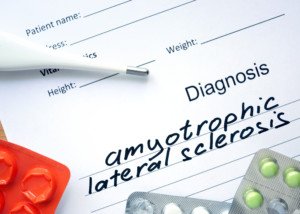
Haven’t you suffered enough with constant anxiety over ALS because of your twitching muscles and perceived atrophy? Get ready to beat your fears!
End the Agony
“Fasciculations can appear in almost any muscle,” points out Daniel Kantor, MD, director of the Neurology Residency Program, Florida Atlantic University.
“When we overuse a muscle,” he says, “it can twitch…your leg muscles may twitch after a long run.”
Anxiety is a strong trigger of twitching muscles.
Your body is gearing up for a fight or flight; think of the twitching like a car engine being revved up.
Another source of your suffering may be perceived weakness and noticing that your body is not symmetrical.
For instance, what appears to be atrophy. Suddenly, one calve is smaller than the other, or your left biceps is smaller than your right.
Your anxiety has remodeled your ability to think rationally; suddenly, after living for all these years, you’ve decided that a little asymmetry must mean muscle atrophy. Where did THIS come from?
“Our bodies are not bilaterally symmetrical,” notes Marc I. Leavey, MD, a primary care physician with 40-plus years of experience.

Some notable (but benign) asymmetry going on in this competitive athlete.
“Even identical twins have subtle differences,” points out Dr. Leavey. He adds, “If you are right handed, your right arm will be a bit more developed from the increased use over years.”
ALS Panic
Upon realizing that muscle twitching can be a symptom of ALS, some will study up on this disease and learn that weakness and cramping are also symptoms.
These individuals then begin perceiving weakness and cramps.
This is why, when one realizes this sequence of symptoms, they begin manufacturing a reality of muscle weakness.
This leads to obsession with repeatedly testing out the perceived location of weakness with various “strength tests.”

Depositphotos.com
This can really be time consuming on a daily basis. This preoccupation develops into making constant visual comparisons of one body side to the other, checking for muscle atrophy.
Get a large calendar; every morning put a red star or draw a big red X on that day.
Soon, you’ll see a string of red marks—and as you see the red marks accumulate, this will grow your reassurance of the increasing time behind your self-diagnosis of possible ALS.
It won’t be long before you have 30 days behind you…then two months, then three months—and you’re still able to run up a flight of stairs or run after your kids.
The torment of thinking you’re dying will get further and further behind you as those red marks grow in number.
Like Dr. Leavey notes, the body is not symmetrical. If you inspect for asymmetry, you’ll find it.
It’ll be your ears, your collarbones, your kneecaps, your fingers, your forearms, your thighs and hips — you’ll find it all over.
You’ll see it in other people too. Watch people who are walking ahead of you. You’ll see asymmetry everywhere.
You must let this fear go. You must stop the remodeling of your ability to think logically. Chronic anxiety remolds the mind. This suffering has to end!
Terrified of ALS? Aim to go 15 minutes without thinking about this malady and ignore twitching muscles, symmetry comparisons, etc. Next step: Aim for 30 minutes.
Keep increasing the time. Forbid yourself to ruminate about ALS for specified time periods.
This will gradually “remold” your thought patterns to a more sensible place.

Dr. Kantor is also President Emeritus, Florida Society of Neurology.










































